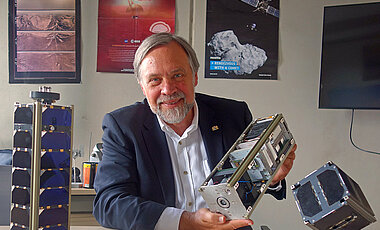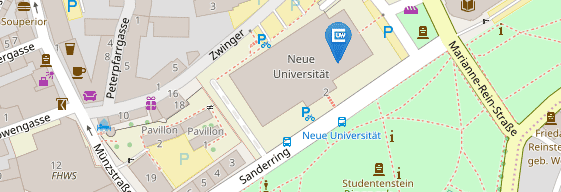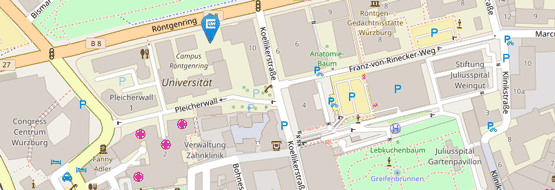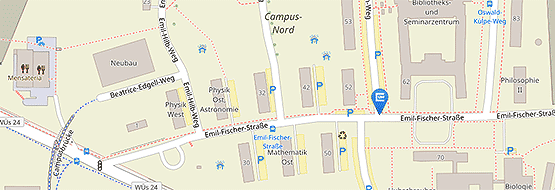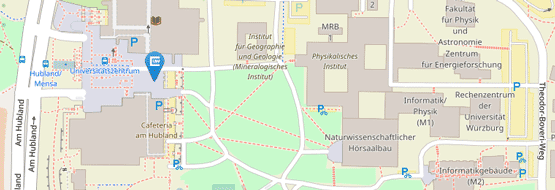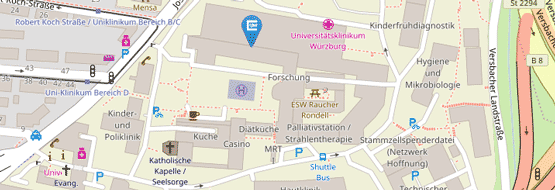Big Award for Small Satellites
09/30/2025The International Academy of Astronautics has honoured Professor Klaus Schilling's pioneering work on small satellites by presenting him with the Engineering Sciences Award.
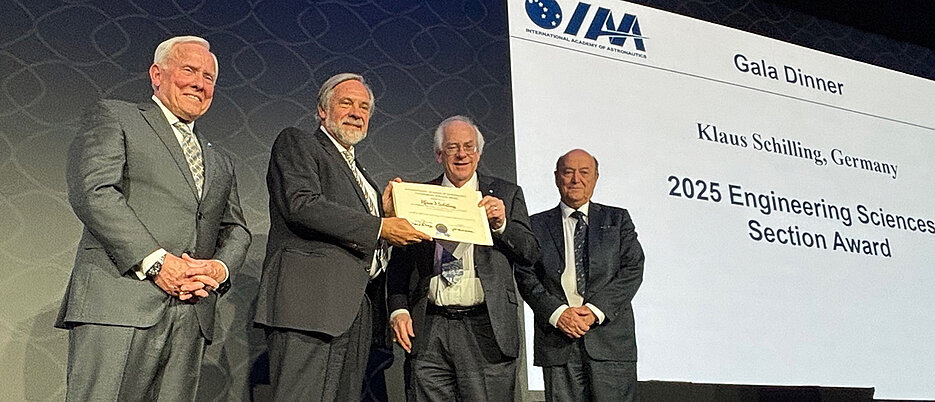
As Head of the Chair of Computer Science VII (Robotics and Telematics), Professor Klaus Schilling and his team at the University of Würzburg realised the first German pico-satellite UWE-1, which was about the size of a milk carton, 20 years ago. The capabilities of these tiny space satellites, which were further developed in the following years, laid the foundations for co-operating, distributed satellite networks in orbit.
The professor has now been honoured for his pioneering research work in this field: The International Academy of Astronautics (IAA) honoured him on 28 September 2025 with its highest award in engineering, the Engineering Sciences Award. This took place at the world's largest space congress in Sydney (Australia).
Klaus Schilling held the chair at the university from 2003 to 2022. Since then, he has been driving forward innovative applications of satellite networks for the global Internet of Things and novel measurement principles in Earth observation at the Würzburg Centre for Telematics e.V., which he founded himself.
Career of Klaus Schilling
Klaus Schilling began his career in the space industry in 1985 with space probes to explore our solar system: HUYGENS, which landed on Saturn's largest moon Titan in 2005, and ROSETTA, which visited the comet Churyumov-Gerasimenko in 2014.
He developed autonomous reaction capabilities for the probes, which brought him into contact with Stanford University and led to his appointment as a consulting professor there. This led to his collaboration with Bob Twiggs, who at the time coined the CubeSat standard for extremely small satellites at Stanford.
As a professor at the University of Würzburg, Schilling took up these concepts and, together with his students, realised the first German pico-satellite UWE-1 (University of Würzburg Experimental Satellite) with a mass of less than one kilogram. The cube with an edge length of ten centimetres was launched into space on 27 October 2005 to optimise the protocols for Internet from space. A model of UWE-1 is now on display at the Deutsches Museum in Munich.
The positive response led to the UWE programme, in which the technologies for cooperating satellite networks were gradually developed, such as capabilities for precise alignment and drive systems for position changes.
Activities at the Centre for Telematics
At the independent research institute Zentrum für Telematik e.V. (ZfT), founded by Schilling in Würzburg in 2007, inter-satellite connections for data exchange and networked control for coordination between the satellites were added. This was followed in 2020 by four NetSat satellites, which were used for the first time to test formation flight in a 3D configuration in orbit.
Such formation technologies are now opening up further innovative applications in earth observation and telecommunications. The ZfT team is investigating new methods for the small series production of satellites in order to be able to produce larger numbers of small satellites in the near future.
Further Awards
Professor Schilling has already received several top European research awards for his research on small satellites, including an ERC Advanced Grant from the European Research Council in 2012 and an ERC Synergy Grant in 2018. This was followed by the Eugen Sänger Medal from the German Aerospace Society in 2021 and the Frank J. Malina Medal from the International Astronautical Federation in 2023.
Weblink
Centre for Telematics e.V. http://telematik-zentrum.de/


